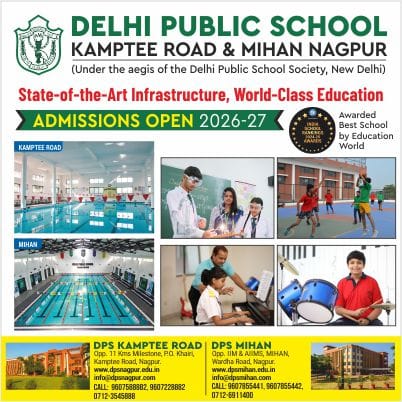
The popularity of Nagpur as centre of the country is not only there on the geography, but also in the heart of the country from various points of view, such as, it is multicultural metro; its people are peace loving; it is famous for oranges; it is cross-route for Indian railways, for the trains to all four geographical directions pass through it and all surface transportation is done through Nagpur. And now, it has become a transportation hub of the country due to its all season large roads. More over the city receives maximum sun-shine as a natural source of energy.
Soon, the city will also get its first Metro, which is expected to carry 3.5 lakh passengers by 2020. A Rupees 8,680-crore worth project consisting of 40-km elevated Metro rail is being constructed at a rapid pace by Nagpur Metro Rail Corporation Ltd (NMRCL), and it is said to be complete by year 2018.
The Managing Director of NMRCL Brijesh Dixit, a veteran of Indian Railways Service of Engineers, believes that the project can deliver on time as it is built on cash contracts model and not the BOT model. The following are the excerpts of what all he said:
Q: Are your sure that Metro rail would be in operation by year 2018?
A: For a Metro rail project, funding and land acquisition are two most important elements, which the NMRCL team has managed to achieve through successful tie-up. More than 80 per cent of project land is in possession and construction work has already commenced for car depots and a 12-km rail section. Nagpur has huge roads as the city serves as a national transportation hub. The elevated Metro rail corridor will be constructed on the road medians, which are sufficiently wide. Construction on the medians does not pose any right of way problems.
A number of multilateral funding agencies, including KFW of Germany and AFD of France, have shown interest in providing Rs 4,521 crore as debt. By December, the debt would also be granted for the project. Rest of the money would be in the form of equity from the Centre and the Maharashtra government. A budgetary grant of ₹500 crore has already been processed. With land and money in place, operating the project by 2018 would not pose any problems.
Q: Will there be modern and international level features in the project? Or you will go by conventional way.
A: In conventional construction methods, if a particular station gets delayed, the whole line gets stalled. The experience in other Metro projects such as Bengaluru and Chennai has proved that delays in Metro station construction are a setback to the whole project.
However, in Nagpur Metro project, construction of the corridor will be independent of the stations. A viaduct has been incorporated in the design, which will allow commissioning of the whole line with only three functional stations.
For the line to operate, two terminal stations and a midway station is required. Nagpur Metro would be the first Metro in the country to use this innovate feature.
Q: What is the revenue prospective from the project?
A: The revenue of the Metro would not be fully dependent on fare collection from passengers. A new revenue generating method called transit oriented development (TOD) has been used in the project. Under the TOD, the density of the population staying along the Metro corridor would be allowed to increase. It would be achieved by increasing the FSI limit, 500 metres on either side of the corridor.
The income generated from the sale of higher FSI would be shared between NMRCL and civic bodies of Nagpur. A State government notification to this effect has already been issued.
The stamp duty in Nagpur municipal area has also been increased by 1 per cent. This additional income would be directly credited to NMRCL.
Q: Will your project be based on electricity energy resource or some alternative resource of energy?
A: Nagpur is a city blessed with a lot of sunshine; in summer, the temperature reaches 45-47 degrees. It is a great discomfort to work in the city during summer. We want to convert this discomfort into an opportunity by incorporating solar power panels in the very design of the project. From the panels, about 14 MW of power would be generated, which would account for 65 per cent of the requirement of the project. It will give long-term energy security for the project and protect it from increasing power tariffs.













